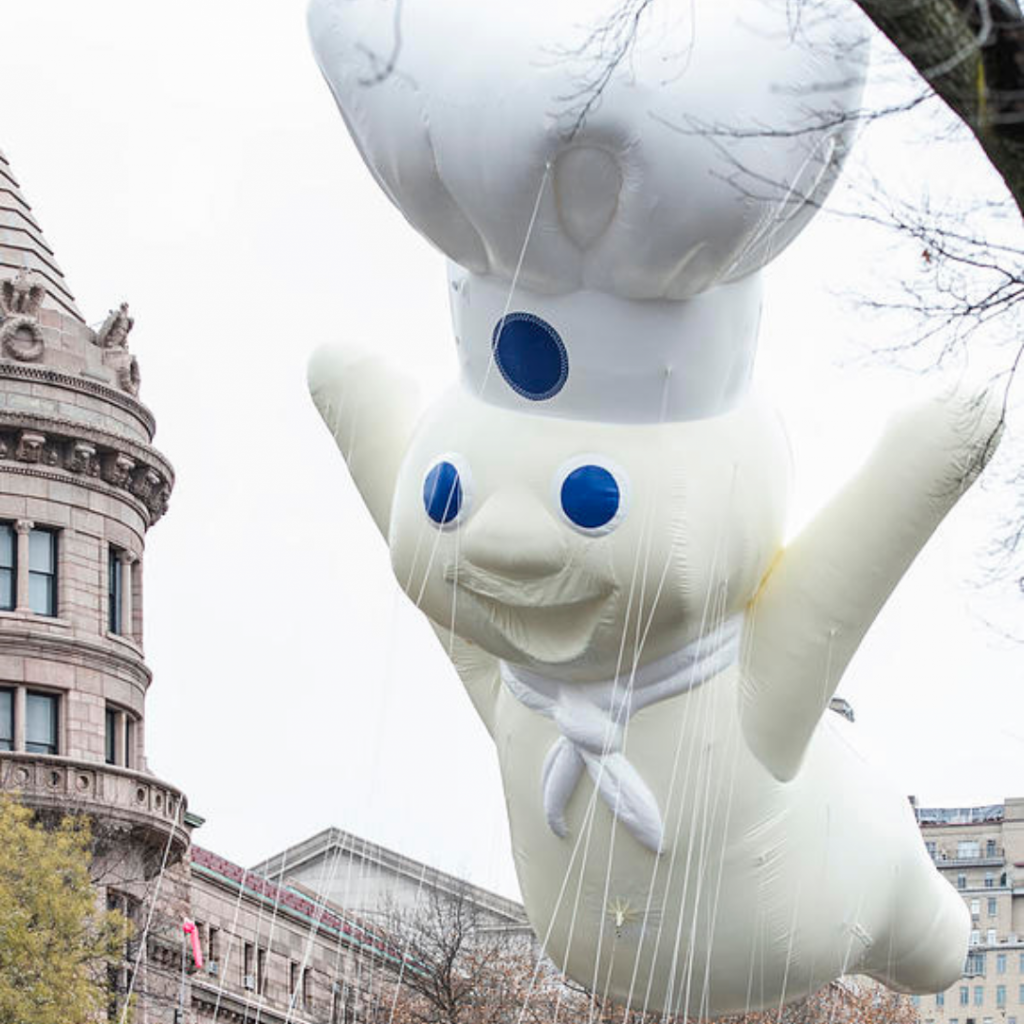Yes, Boomers, the Pillsbury Doughboy turns 50 this October, and University of Florida researchers created Gatorade that same year, 1965.
Today, Gatorade can be found on the sidelines of more than 70 Division I colleges as the official sports drink of men’s and women’s intercollegiate sports. In 1983, Gatorade became the official sports drink of the NFL. It has also become the official sports drink of the NBA, PGA, Major League Baseball, and many other elite and professional organizations and teams.
Since 1965, Pillsbury has used Doughboy in more than 600 commercials for more than 50 of its products. In addition to serving as the face of numerous Pillsbury refrigerated dough products, the Doughboy, aka Poppin’ Fresh has woven itself into popular culture, including references in sitcoms like Big Bang Theory and The Simpsons; serving as the model for the Stay Puft Marshmallow Man in Ghostbusters; and appearing in the GEICO ad series, “Get Happy, Get GEICO,” with the tagline, “happier than the Pillsbury doughboy on his way to a baking convention.”
Clearly, these are two successful and persistent brands—both from a product development and a marketing perspective. Which begs the question: What can we learn from them in order to help our brands remain relevant during changing times?
I think the answer is as simple—and as complex—as what I fondly refer to as the ABC’s of marketing:
ABOUT THE CUSTOMER. If you want to be relevant to those you are trying to reach—whether through a billboard or an editorial—it’s important to know your audience. There is no substitute for market research, especially good ethnographic research, which has been a hallmark of both Gatorade and Pillsbury. In fact, Gatorade’s Sports Science Institute (GSSI), a research facility in Illinois, has been featured in a number of the company’s commercials. GSSI was created not only for the purpose of studying the correlations and effects of exercise and nutrition, but also as a part of Gatorade’s marketing efforts. The company’s identification of a consumer need through research allowed them to seize market share that will be difficult for competitors to capture.
As demographics change and more sophisticated means for assessing psychographic impacts emerge, all customers are not created equal from a market research perspective. In 2014 cookie dough market research, Pillsbury quickly learned that although there was strong brand awareness among the “moms” demographic in Canada—interestingly enough 40% who baked recognized the Doughboy from either TV commercials or childhood memories—simply using US-based research insights was insufficient in appropriately positioning the cookie product in Canada.
BUILD THE BRAND (relentlessly). As the pioneer brand in the sports drink category, Gatorade ranks among the top ten brands in the U.S. Liquid Refreshment Beverage market. Even with its amazing story of growth and reinvention, Gatorade has lost market share in recent years to competitors in the “hydration” category, most notably Glaceau Vitaminwater, which Coca Cola bought in 2007. Still, Gatorade controls 79 percent of the sports drink category. The company’s various line extensions—all developed through extensive customer research— have helped sustain that market share. So, too, have the company’s efforts in refreshing and modernizing some of their sub-lines with particular attention to the shift in consumer preference for healthier beverages (e.g., Propel). Carefully managing its brand, the company has discontinued some products that failed to resonate with consumers.
Ranked #86 on Forbes “Most Valuable Brands” list, Gatorade has built its brand over 50 years through research-based product development, the creation of its own category, exceptional marketing, and relentless reinvention and adaptation.
COMBINE ART AND SCIENCE. Both creativity and data are vital to maintaining brand relevance.
Doughboy was birthed in Rudy Perz’s kitchen, when Perz, who was tasked with creating an ad campaign for Pillsbury’s refrigerated dough products, imagined a blob of dough popping from a crescent roll can and assuming human characteristics. For years, customers have embraced Poppin’ Fresh not only through purchases, but through their engagement with the mascot. According to parent company General Mills, Pillsbury receives over 200 fan letters per week and hundreds of request for autographed photos of Doughboy. Poppin’ Fresh graces the banner of Pillsbury’s Facebook page, which has over 3 million likes.
The art of creation brings us novel brand stories—as 160/90 says on its agency’s website, “. . . told in a compelling way. . . true stories, great stories” with which we connect like Poppin’ Fresh, while data helps us decide whether he gets a tattoo, disappears, or changes his accent when giggling.


